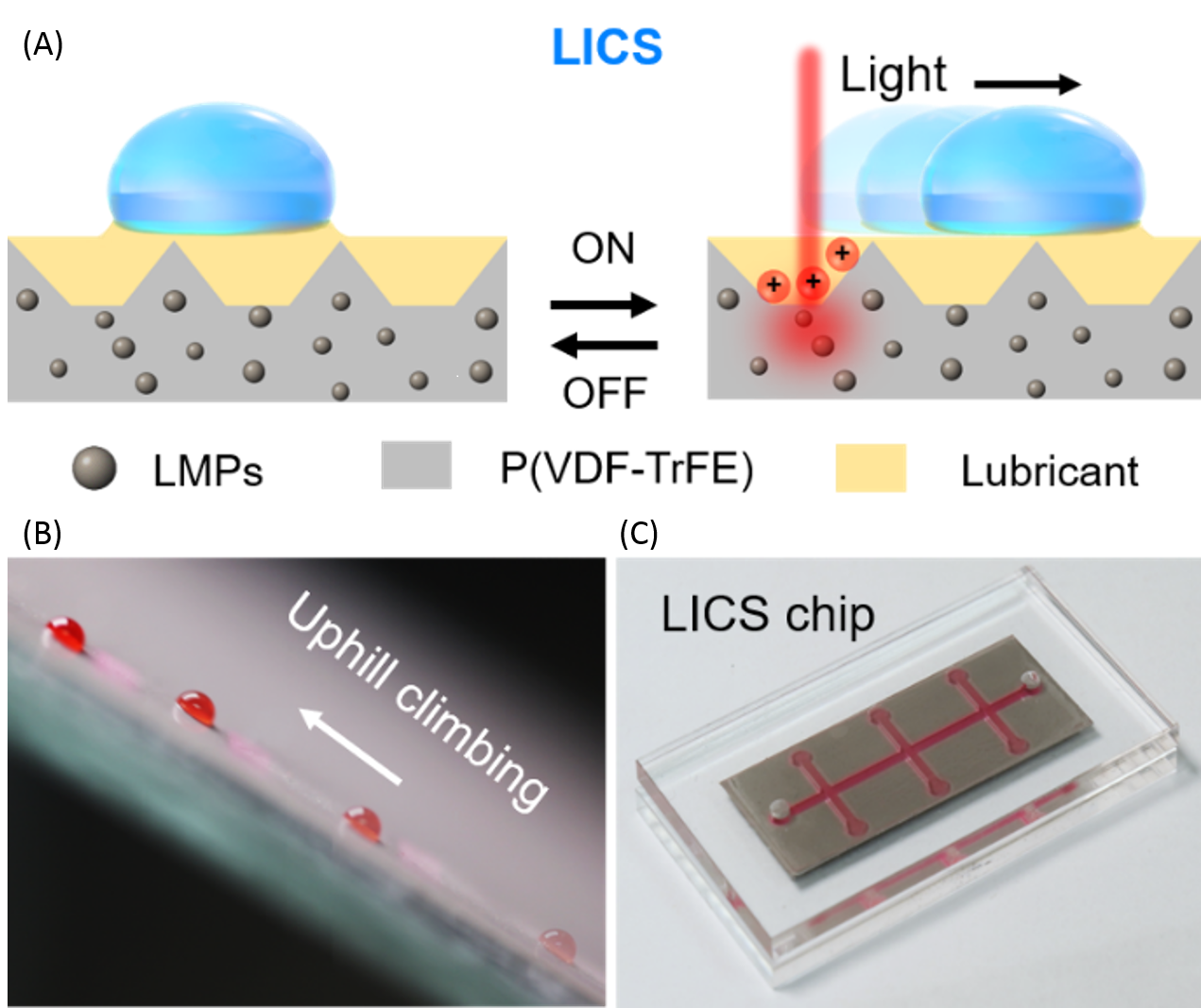Dr. Xuemin Du of the Shenzhen Institute of Advanced Technology (SIAT), Chinese Academy of Sciences, headed a study team that discovered a new slippery material with outstanding light-induced charge regeneration capabilities, allowing photocontrol of droplets in a variety of working circumstances.

Image Credit: Gorodenkoff/Shutterstock.com
Slippery lubricant-infused porous surfaces (SLIPS) and superhydrophobic surfaces have evolved as new interfacial materials for self-cleaning, anti-icing, and antifouling purposes. The lubricant layer’s coverage/screening on an existing rough matrix confers novel features that are not conceivable on superhydrophobic surfaces.
However, such a lubricating layer introduces unnecessary complications. Firstly, the lubricant layer obscures the underlying matrix, rendering the structural gradient or surface charge gradient usually visible on the solid surface to become invalid.
Secondly, the presence of lubricant makes it challenging for active and well-controlled management of the liquid/droplet in a stimuli-responsive way.

LICS platform. (A). Schematic illustration of LICS for droplet manipulation. (B). Droplet moving upward. (C). Pump-free LICS microfluidic chip. Image Credit: Shenzhen Institute of Advanced Technology.
Micro-sized Ga-In liquid metal particles (LMPs) for effectively converting assimilated light into local heat, poly(vinylidene fluoride-co-trifluoroethylene) [P(VDF-TrFE)] copolymer with excellent ferroelectric behavior, and microstructures coated with a layer of hydrophobized SiO2 nanoparticles (SiO2 NPs) for trapping lubricant are the three main components of the proposed light-induced charged slippery surface (LICS).
Due to its innovative design, the LICS can quickly produce surface charges as greater as 1280 pC mm-2 in just 0.5 seconds when exposed to 100 mW mm-2 of near-infrared (NIR) radiation. Its strong ability to regenerate charges does not appear to degrade even after 10,000 cycles of instinct NIR irradiation or even six months of immersion in silicone oil.
The light-induced charge regeneration in LICS exhibits superior efficiency, reliability, and stability, eliminating the unwanted screening effect caused by the presence of a lubricant.
Dr Xuemin Du, Shenzhen Institute of Advanced Technology, Chinese Academy of Sciences
The researchers demonstrated that the LICS adds a new dimension and versatility to the manipulation of droplets, including fast speed (approximately 18.5 mm s-1), long distance (approximately 100 mm), anti-gravity climbing, single-to-multiple droplets, micro-to-macroscale size (from 10-3 L to 1.5 103 L), flat-to-curved surface, liquid-to-solid lubricant, and open-to-closed systems.
They expanded the LICS to include biomedical domains as well, including everything from precise morphological hydrogel-bead generation in an inclusive environment to biological assessment and diagnosis in pump-free and closed-channel microfluidics.
“The simple design, portable operation, and unique features of the LICS would open new avenues for the next-generation interfacial materials and microfluidics, bringing wide possibilities for chemical and biomedical applications,” said Dr Du.
Journal Reference
Wang, F., et al. (2022) Light-induced charged slippery surfaces. Science Advances. doi.org/10.1126/sciadv.abp9369.